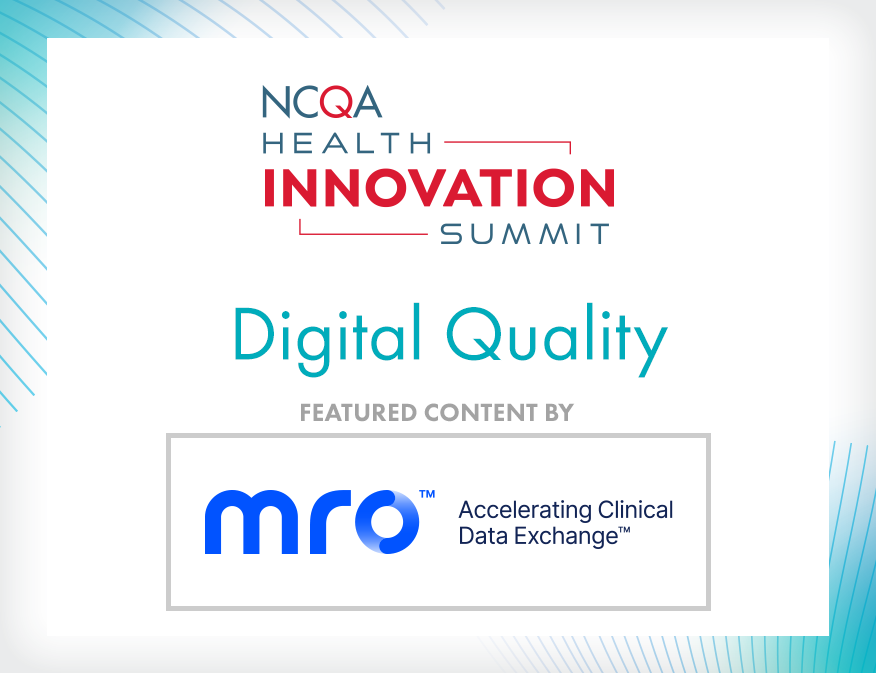Frequently Asked Questions
Can my organization complete parallel testing for MY 2025 but wait until MY 2026 to transition to digital reporting?
Yes. Completion of NCQA’s parallel testing does not mandate that an organization report digitally in the immediate following year. However, NCQA recommends ongoing validation of results as digital measures, interoperability standards and associated tooling continue to evolve.
Can my organization submit parallel testing years for previous years (e.g., submit MY 2024 results in 2026)?
No, organizations may only submit results during the designated submission window for each measurement year.
Can an organization complete parallel testing with one vendor and then switch to another vendor for digital reporting?
Yes. Organizations may switch vendors for digital reporting without repeating parallel testing, provided the new vendor has successfully completed NCQA’s dQM Implementation Validation Program. NCQA recommends continued validation of digital results due to evolving standards and tooling.
If an organization uses the same vendor for both traditional and digital reporting, are they still required to go through a parallel testing year?
Yes. Parallel testing is required regardless of whether an organization uses the same or different vendors to perform traditional and digital reporting.
Must a vendor go through parallel testing with all customers?
Yes. Because data impacts and validation rationale may vary across organizations, parallel testing must be conducted with each customer.
Do the NCQA digital quality measures generate results in the IDSS XML format?
No. NCQA digital measure output is in FHIR .json format at the member level. It is the responsibility of the organization or its vendor to convert these results into the IDSS XML format required for submission.
Will NCQA migrate to FHIR-based submissions instead of the IDSS XML format?
NCQA is monitoring and evaluating progressions in the standard for reporting submissions. If your organization has feedback on this format, please submit a PCS ticket to My NCQA.
What are the audit implications of parallel testing?
Audit requirements for traditional reporting remain unchanged. For digital testing, there is no expectation that a separate end-to-end audit is conducted. Audit designations will not be assigned to digital results and a Final Audit Report will not be required. Instead, Certified HEDIS® Compliance Auditors will independently review the parallel testing results, compared with traditional results, including rates, initial populations, exclusions and numerators between traditional and digital reporting. They may also investigate data mapping and production processes contributing to discrepancies. Organizations should proactively engage their auditor to establish define review workflows.
Has NCQA defined an acceptable margin of variation when comparing traditional and digital measure results?
No. NCQA does not require that traditional and digital results be exactly aligned or be within a pre-determined margin of variation. Differences are expected due to data infrastructure variability. The focus is on reviewing final results, enabling comparisons and supporting rationale to assess validity, which may differ across organizations.
How will NCQA support organizations that are pursuing parallel testing?
Support for parallel testing will vary depending on customer needs. NCQA cannot assist with data mapping, CQL interpretation or validation of final results. However, NCQA provides guidance on digital measure specifications, implementation guides and other supporting materials and system-related (i.e., IDSS) questions for parallel testing submissions.
Support can be requested through My NCQA.
What measures and data elements are in scope for parallel testing?
Any data elements for hybrid reporting are outside the scope of parallel testing.
In-scope measures include those from HEDIS Volume 2 and NCQA-stewarded Quality Rating System measures in the following domains:
- Effectiveness of Care
- Access/Availability of Care Measures
- Utilization Measures
- Risk Adjusted Utilization Measures
- Measures Reported Using Electronic Clinical Data Systems
- Health Plan Descriptive Information Measures
Can organization submit measures in batches (e.g., 4-8 measures at a time)?
Yes, NCQA can support organizations that choose to batch their measures for parallel testing, especially when aiming to make incremental progress over time.
However, for final approval for digital reporting, all measures must undergo parallel testing.
What is the typical duration for parallel testing, and how many full-time equivalents should be assigned to support it?
The duration and staffing needs for parallel testing depend on several organizational factors, including but not limited to:
- The tools and capabilities available to accurately map FHIR data to digital measure requirements.
- The team’s ability to interpret digital measure specifications and FHIR implementation guides, including understanding CQL and resolving conformance errors.
- The tools and process in place to identify issues, trace root causes, and iterate quickly within data pipelines.
- The ability to efficiently validate results between digital and traditional HEDIS measures.
 Parallel testing is a transitional step that ensures accuracy during the shift to digital HEDIS. During this phase:
Parallel testing is a transitional step that ensures accuracy during the shift to digital HEDIS. During this phase:







